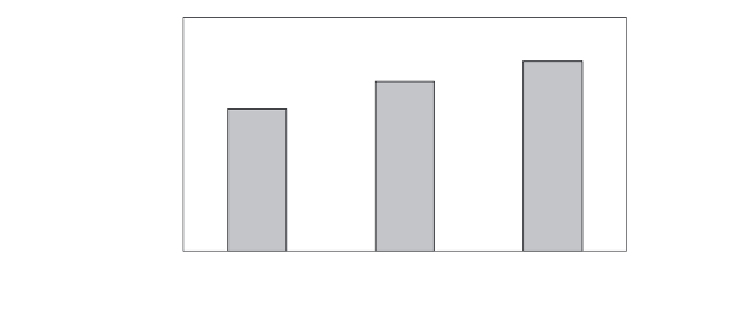Agriculture Reference
In-Depth Information
500
400
300
200
100
0
0
≤ 3
1-2
Number of stillborn piglets
Figure 7.1. Farrowing length of sows giving birth to 0, 1-2 or 3 or more stillborn piglets.
stillborn piglets increases farrowing length or whether a prolonged farrowing increases
the frequency of stillborn piglets. The birth interval in the above-mentioned study was on
average 20±1 min, but on an individual basis the fastest sow gave birth to a piglet every
7
th
min, whereas the slowest sow gave birth to a piglet every 52
nd
min.
Feeding may play a role for the farrowing process in several ways. Inclusion of fiber in the
diet prior to parturition may alleviate constipation, which could otherwise act as a physical
barrier when fetuses are expelled through the birth canal. The impact of feeding strategies
on peripartum constipation is covered in Chapter 10 (Peltoniemi and Oliviero, 2015).
Oliviero
et al.
(2010) found that a low constipation index was associated with shorter
farrowings. Another beneficial effect of dietary fiber is a greater and prolonged uptake of
energy from the gastrointestinal tract (Serena
et al.
, 2009). Indeed, sows fed substantial
amounts of fiber absorb energy from the gastrointestinal tract even 24 h after the last
meal, and this may be of particular importance for sows during farrowing because their
feed intake may be lowered prior to and during farrowing. Excessive obesity at parturition
is also associated with prolonged farrowing (Oliviero
et al.
, 2010) and this indicates that
the nutritional status of the sow in the transition period may play a role for the farrowing
process. Supply of dietary minerals may also be of importance, and calcium is indeed
known to be essential for muscle contraction. Proper calcium status for sows at parturition
may be required for proper contractions of muscles surrounding the uterus, which are
responsible for transporting fetuses forward and expelling them through the birth canal.
Reduction of the stillbirth rate by means of optimal zinc supply during late gestation has
recently been shown by Vallet
et al.
(2014), although the mode of action of Zinc is currently
unknown. Complications during the farrowing process may lead to an increased rate of
stillbirths and reduction of stillbirth rate by nutritional means definitely deserves further
attention. Coffey
et al.
(1987) reported that addition of 10% fat to the diet of late pregnant
sows reduced the rate of stillbirths, but it should be emphasized that their conclusion was
based on only 8 sows per dietary treatment, which is a very low number when studying
stillbirth rate. Another positive effect of sow nutrition around parturition could potentially






